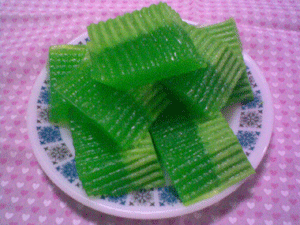ZAT TUNGGAL
- Unsur
- Senyawa
Unsur merupakan zat tunggal yang tidak bisa dipisahkan menjadi zat lain yang lebih sederhana. Contoh: hidrogen (H), oksigen (O), besi (Fe) dan lain-lain.
Senyawa adalah zat tunggal yang dapat dipisahkan menjadi zat lain yang lebih sederhana. Suatu senyawa hanya dapat dipisahkan menjadi unsur-unsur penyusunnya melalui perubahan kimia. Contoh senyawa: air (H2O), alkohol (C2H5OH) dan lain-lain.
- Larutan
- Koloid
- Suspensi
Larutan adalah campuran homogen yang terdiri dari dua jenis zat atau lebih. Homogen artinya tidak ada bidang batas antara zat yang satu dengan yang lain (meski diamati menggunakan mikroskop ultra) atau mempunyai satu fasa. Larutan sering disebut secara spesifik sebagai larutan sejati. Ukuran partikel larutan sejati kurang dari 1.10-9 nm. Contoh: larutan gula.
 Koloid merupakan jenis campuran yang memiliki karakteristik khusus sehingga dipelajari pada pembahasan tersendiri. Secara kasat mata koloid terlihat homogen, tetapi jika diamati menggunakan mikroskop ultra akan terlihat jelas bahwa koloid merupakan campuran heterogen. Ukuran partikel koloid antara 1.10-9 - 1.10-7 nm. Contoh: susu, agar-agar dan kabut.
Koloid merupakan jenis campuran yang memiliki karakteristik khusus sehingga dipelajari pada pembahasan tersendiri. Secara kasat mata koloid terlihat homogen, tetapi jika diamati menggunakan mikroskop ultra akan terlihat jelas bahwa koloid merupakan campuran heterogen. Ukuran partikel koloid antara 1.10-9 - 1.10-7 nm. Contoh: susu, agar-agar dan kabut.
(gambar diambil dari: http://roseskitchen.files.wordpress.com/2007/06/pandan-custard-agar-agar-slices.jpg)
Suspensi merupakan campuran heterogen dengan ukuran partikel lebih besar dari 1.10-7 nm. Contoh: campuran tepung terigu dengan air.
Chemistry learning all about materials. The material is anything that has mass and occupies space. Materials can be classified into a single substance and mixture.
SINGLE SUBSTANCE
1. Element
Element is a single substance that can not be separated into other simple substances. Example: hydrogen (H), oxygen (O), iron (Fe) and others.
2. Compound
Compound is a single substance that can be separated into other simple substances. A compound can only be separated into elements by chemical changes. Example compound: water (H2O), alcohol (C2H5OH) and others.
MIXED
1. Solution
Solution is homogeneous mixture and consists of two or more kinds of substances. It means that is no homogeneous field boundary between the substance of one another (although observed using ultra-microscope) or to have one phase. Solution is often referred to specifically as the pure solvent. The size of pure solvent particles less than 1.10-9 nm. Example: sugar solution.

2. Colloid
Colloid is a mixture that have special characteristics so that discussed in aother part. The colloidal look homogeneous, but when colloid observed using a ultra-microscope will be visible to clear that the colloid is a heterogeneous mixture. The size of colloidal particles between 1.10-9 - 1.10-7 nm. Examples: milk, jelly and fog.
(picture taken from: http://www.jaylichtman.com/pictures/picture-oregon-city-or-bridge-in-fog.JPG)
3. Suspensi
Suspensi is a heterogeneous mixture of particles with a size greater than the 1.10-7 nm. Example: a mixture of wheat flour with water.
No comments:
Post a Comment